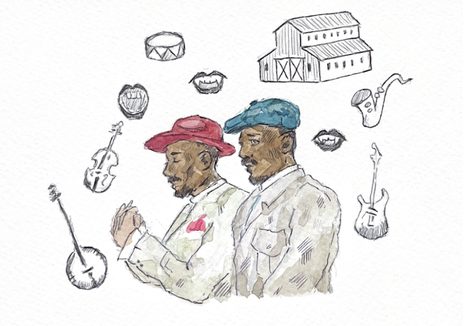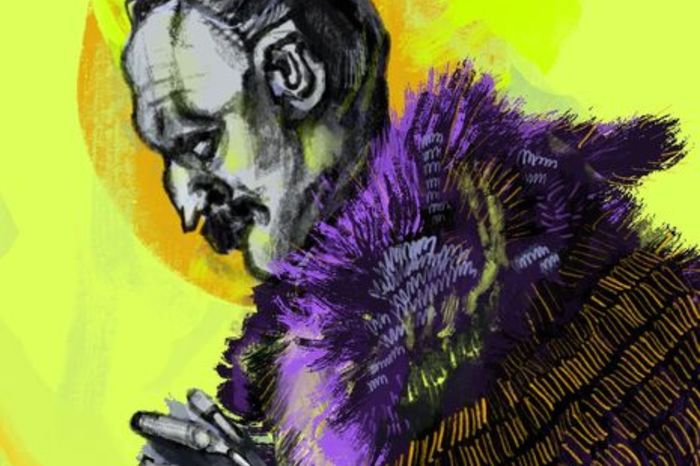Sinners is not another vampire movie
Jacob Smith explores the impact of Göransson’s soundtrack in the recently released Sinners

Renfield, Nosferatu, now Sinners: it’s safe to say that the vampire genre is having a renaissance of sorts. So I sat down to watch Sinners slightly exasperated, with tempered expectations. But, I don’t think I so much as blinked until the credits rolled. What unfolded during the 2 hour run time was a hypnotic experience, one that oozed seduction and style, and backed its bark up with a bloody bite. Needless to say, I loved it, and the likely reality is that you will too. Let’s talk about why.
An obligatory reference should be paid to its stellar marketing. It screams “this is a Michael B. Jordan movie” where he does what Michael B. Jordan does best – acts suave, and handles business. It might come as a surprise then that Jordan plays two polar opposite twins, Stack and Smoke. Stack is the type of character you would predict for him: reckless, suave, seductive. The other though is a purposeful reversal of much of what type casting would indicate: Smoke is tempered, methodical, and harrowed.
“Music resides at the heart of Sinners”
Jordan pulls off the double act perfectly. It’s hard to quantify a belief that a man is simultaneously two different people, but Jordan’s performances induce exactly that. What’s so ingenious about the marketing is that, despite the proliferation of Jordan, he is not in fact the protagonist. Rather, in his first professional casting, Miles Caton steals the show as Sammie Moore. Besides his performance, what stunned myself and everyone in the crowded theatre was his vocal work, singing on multiple tracks within the movie’s soundtrack.
Music resides at the heart of Sinners. It is entwined with our concepts of evil communion, ritual prayer, social interaction, and solitary introspection. Music pervades areas that appear oxymoronic, this concept and all its implications being fully realised through Caton’s vocal performance. Spiritual identities, however contradictory and unique that exist within music, are depicted in jaw dropping visual poetry, with Caton’s voice at the heart of it.
Coogler’s fixation on identity can be seen pivotally in Ludwig Göransson’s soundtrack. The movie oozes soul, the pain of its characters, their struggles, and shared histories bleed the notes you hear throughout the experience. Göransson shows through his score an acute awareness for the identity of blues music, its past, its future, as well as its origin in the pain of African colonialism. Quite like Tarantino’s Dusk Till Dawn, Sinners is cut cleanly into two acts, one calm and comparatively grounded, the other visually chaotic, violent, and supernatural. The score underpins the transition beautifully, beginning with simple blues rhythms and little percussion, producing a sound contemporary to the movie’s era, 1932. However, as the encroaching presence of the occult, the forces attacking the individuals at the heart of a highly insular African American community, reveals itself, hints of rock begin to seep into the musical language.
“Rock music’s association with the occult is itself a worthy topic for an article”
I remember my ears pricking when, as dusk fell, the sound of metal guitar blasted in unison with sustaining blues melodies, one resisting whilst being rivalled by the other. Rock music’s association with the occult is itself a worthy topic for an article, the long history of it, like the blues, being ostracised and excluded from the musical canon, its chords demonised by the church, and deemed ‘the devil’s music’. These cultural associations feed into the themes Coogler’s piece explores perfectly.
Finally, a glance at the vampires themselves, led by the scarily charming Remmick (Jack O’Connell). An easy allegorical device, they often present a simple binary opposition of the ‘good’ protagonists, as evil monsters. What starts with “their fear of him (Remmick) being this racist guy” turns to “learning that his view on race is the opposite” as the film progresses, showing that Coogler wasn’t happy with adopting the genre’s binary. Even the traditional Irish folk music seen performed by Remmick and his ‘band’ of vampires demonstrates the power of musical identity birthed from cultures victimised by colonialism. Its inclusion reveals the similarities between the vampires and the community our protagonists reside within, removing the binary “good and evil/racist trope” that dissatisfied Coogler.
From music, to set pieces, to violence, and gore, this movie really does spectacle excellently. If identity was the goal, then it secures an identity of its own superbly. Simply put, you’re doing a disservice to yourself if you don’t watch Sinners.
 News / Uni Scout and Guide Club affirms trans inclusion 12 December 2025
News / Uni Scout and Guide Club affirms trans inclusion 12 December 2025 News / Cambridge Vet School gets lifeline year to stay accredited28 November 2025
News / Cambridge Vet School gets lifeline year to stay accredited28 November 2025 Science / Did your ex trip on King’s Parade? The science behind the ‘ick’12 December 2025
Science / Did your ex trip on King’s Parade? The science behind the ‘ick’12 December 2025 News / Cambridge study finds students learn better with notes than AI13 December 2025
News / Cambridge study finds students learn better with notes than AI13 December 2025 News / Pembroke to convert listed office building into accom9 December 2025
News / Pembroke to convert listed office building into accom9 December 2025








